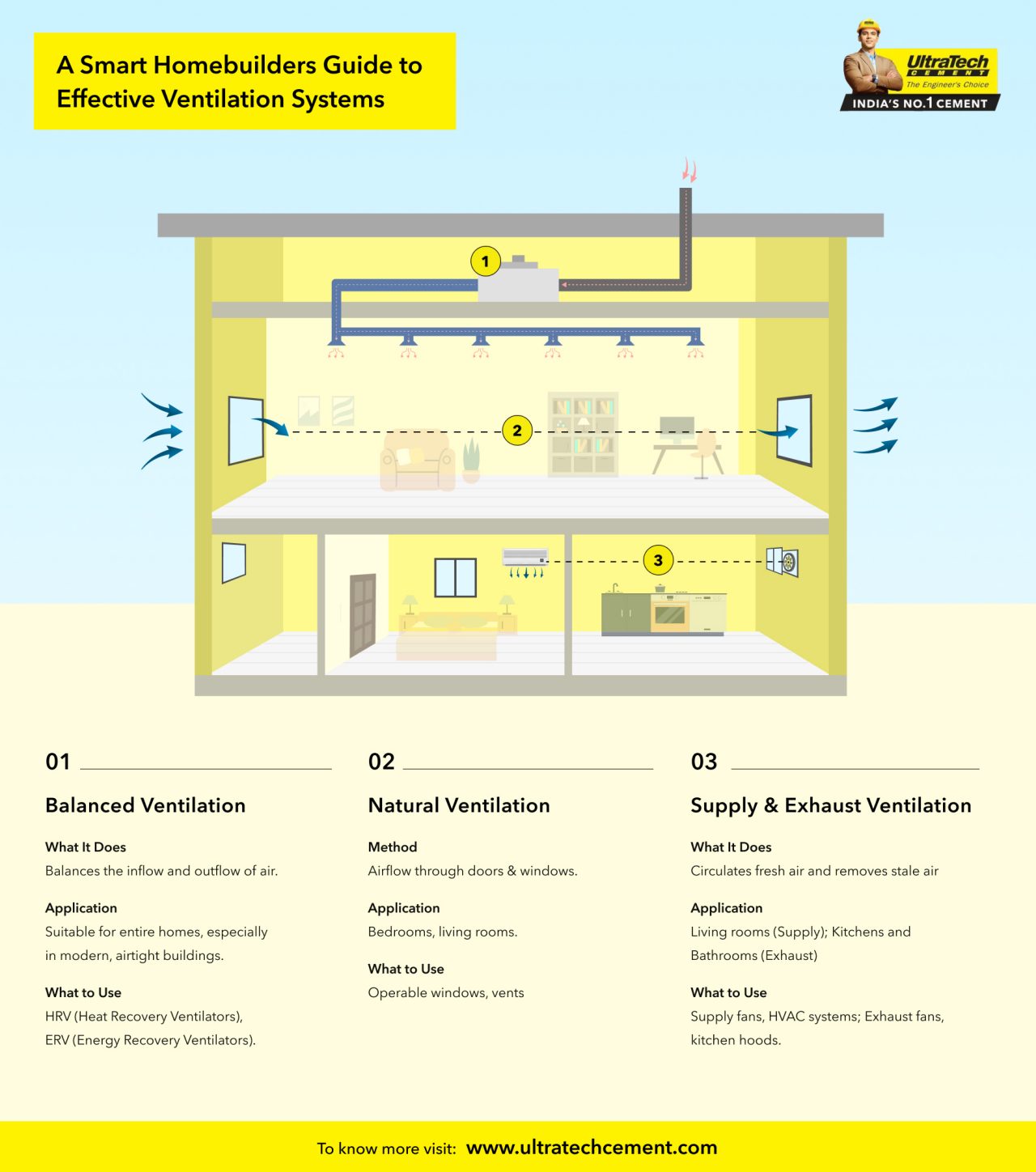Professional Tips for Maintaining Home Ventilation Melbourne Systems
Wiki Article
Understanding the Value of Home Ventilation for a Healthier Living Setting
Home air flow plays a vital duty in keeping a healthy and balanced living environment. It facilitates the exchange of outdoor and indoor air, which is crucial for enhancing air top quality. Without appropriate ventilation, homes can become breeding grounds for toxins and irritants. The consequences of poor air blood circulation can be substantial. This raises the query of just how homeowners can successfully carry out ventilation techniques to safeguard their health and well-being. Understanding these techniques is imperative.
The Essentials of Home Air Flow
Home air flow works as a crucial element of interior air quality and convenience. It includes the procedure of trading stale indoor air with fresh exterior air, therefore reducing moisture and regulating temperature level. Correct air flow systems can consist of all-natural techniques, such as open windows and vents, as well as mechanical systems, such as exhaust fans and air exchangers. Effective home air flow aids protect against concerns like interior mold and mildew development and the buildup of harmful particles. It also boosts general energy efficiency, as well-ventilated rooms can preserve comfy temperatures with less dependence on home heating and cooling down systems. Understanding the basics of home ventilation is important for property owners seeking to create a healthier living atmosphere on their own and their family members.
Usual Resources of Indoor Air Contamination

Although numerous might not understand it, interior air pollution can originate from different resources within a home. Common factors consist of volatile natural substances (VOCs) sent out from paints, solvents, and cleansing products. Household devices, such as gas ovens and fireplaces, can launch unsafe gases like carbon monoxide gas and nitrogen dioxide. Furthermore, mold and mildew and mildew thrive in wet locations, launching spores that impact air quality. Pet dog dander, dirt mites, and pollen can gather inside your home, further intensifying contamination levels. Smoking cigarettes inside your home creates hazardous chemicals that remain in the air. Finally, developing products, including asbestos and formaldehyde, can off-gas damaging substances. Acknowledging these resources is necessary for maintaining a much healthier indoor environment and promoting reliable ventilation approaches.
Health Effects of Poor Ventilation
Interior air pollution can have considerable health effects, particularly when ventilation is poor. Poor ventilation can lead to the build-up of damaging toxins, such as volatile organic substances, mold and mildew, and particle matter. This accumulation may cause breathing problems, consisting of bronchial asthma, allergies, and persistent obstructive lung disease. Individuals might experience symptoms like headaches, exhaustion, and irritation of the eyes, nose, and throat. Prone populaces, such as children and the elderly, go to higher danger for serious health results. Long-lasting direct exposure to poorly ventilated atmospheres can likewise add to more serious conditions, including heart diseases. Subsequently, ensuring appropriate ventilation is vital for keeping a healthy and balanced living atmosphere and lowering the risk of health problems connected with indoor air pollution.Efficient Ventilation Strategies for Your Home
Correct air flow is important for maintaining a healthy interior environment, and carrying out efficient approaches can significantly improve air quality. House owners can begin by making certain that exhaust followers are mounted in restrooms and kitchens to get rid of Visit Website excess wetness and odors. Opening up home windows routinely permits fresh air to circulate, specifically during mild climate. Furthermore, making use of air purifiers with HEPA filters can aid record airborne pollutants. For homes with heating and cooling systems, maintaining heating and cooling systems and transforming filters frequently is vital for peak performance. Integrating natural ventilation methods, such as cross-ventilation, can additionally enhance airflow. Lastly, sealing any type of leakages in doors and home windows protects against undesirable drafts, which can disrupt controlled air movement, eventually leading to improved indoor air high quality and convenience.Preserving Optimum Air Quality Year-Round
To keep excellent air quality year-round, property owners need to embrace a positive strategy to managing their interior environment. On a regular basis monitoring indoor air high quality is critical; this consists of monitoring for toxins such as dirt, mold, and unstable organic compounds (VOCs) Executing reliable ventilation systems, such as exhaust fans and air cleansers, can considerably minimize air-borne impurities. In addition, regular upkeep of a/c systems warranties peak efficiency and air blood circulation. House owners ought to additionally take into consideration moisture degrees, as extreme moisture can lead to mold growth. Seasonal adjustments might require changes in ventilation techniques to accommodate differing outside air top quality. By prioritizing these techniques, homeowners can create a much healthier space, promoting general well-being for all owners throughout the year.Regularly Asked Concerns
How Can I Inform if My Home Requirements Better Air Flow?
To figure out if a home requires far better ventilation, one should observe indications such as relentless moisture, mold and mildew development, moldy smells, condensation on windows, or raised allergic reaction signs and symptoms, suggesting poor air more info here flow and possibly bad interior air high quality.What Are the Signs of Poor Indoor Air Quality?

Can Houseplants Improve Indoor Air High Quality Properly?
The efficiency of houseplants in improving interior air quality is debated. While some researches suggest they can soak up contaminants and create oxygen, their overall influence may be marginal compared to correct ventilation and air purification systems.How Often Should I Modification My Air Filters?
The frequency of air filter adjustments normally depends on usage and filter kind. Typically, it is recommended to replace filters every 3 months, though houses with allergic reactions or animals might call for more regular changes for perfect efficiency.Exist Any Certain Air Flow Equipments for Allergic Reaction Sufferers?
Numerous air flow systems, such as HEPA-filtered units, efficiently have a peek here lower irritants airborne. Home Ventilation Melbourne. These systems trap pet dog, dust, and pollen dander, giving allergy sufferers with a cleaner, much healthier indoor environment while taking care of air high quality effectively
It helps with the exchange of interior and outdoor air, which is vital for improving air quality. Home ventilation serves as a crucial component of indoor air quality and comfort. It includes the process of trading stale indoor air with fresh exterior air, consequently minimizing humidity and regulating temperature. Interior air pollution can have significant health effects, particularly when air flow is poor. Appropriate ventilation is essential for keeping a healthy and balanced interior atmosphere, and executing effective techniques can considerably enhance air quality.
Report this wiki page